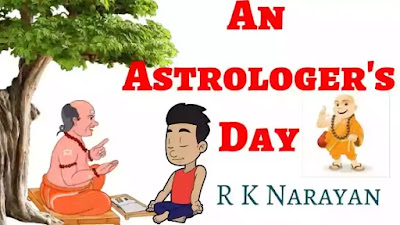Also Read
The "An Astrologer's Day" is a collection of thirty short stories that purely describes life and different aspects of life. Tragedy, love, loss, humour, faith and hope all enlace and have a part to play in the lives of the diverse figures that come and go in the fictitious village Malgudi. The collection is truly a masterpiece that brightens Narayan's career.
'An Astrologer's Day' was first published in the newspaper 'The Hindu'. Afterwards it was made the title story of a collection of short stories, which appeared in 1947. This was the year when India gained its independence. "An Astrologer's Day" remains a major work in his principal sum and displays all the characteristics associated with his writing. R. K. Narayan's sense of irony, his deep religious sensibility, his humour, his consciousness of the significance of everyday occurrences, and his belief in a Hindu vision of life are all revealed in this story. He always wrote in his own style depicting different aspects of life and this collection truly express his uniqueness. An Astrologer's Day is mainly a collection of stories about characters from every walk of Indian life and that includes merchants, beggars, herdsmen, rogues, all of them in one place i.e. Narayan's make-believe village Malgudi. This is an portrait part that these stories are written by an Indian writer and read by a predominantly Native-Indian i.e. English speaking reader. Narayan was not writing to interpret India for Westerners and that was his speciality. All the stories of An Astrologer's Day depict the same character.
Being published by the Penguin Books Ltd. An Astrologer's Day" truly signify the scenario of that period which is still applicable in various aspect till now.
The collection 'An Astrologer's Day' actually comprises of thirty pieces. The stories contain all the emotion of human life i.e. humour, laugh, cry, parting, fraud, etc. all of the stories had previously appeared in the Madras Hindu. Thus they had been presumably enjoyed by the readership of one of India's greatest English-language newspapers. Though this readership would include most of the British, Anglo-Indians, and Americans living in South India, it would be made up overwhelmingly of true Indians.
